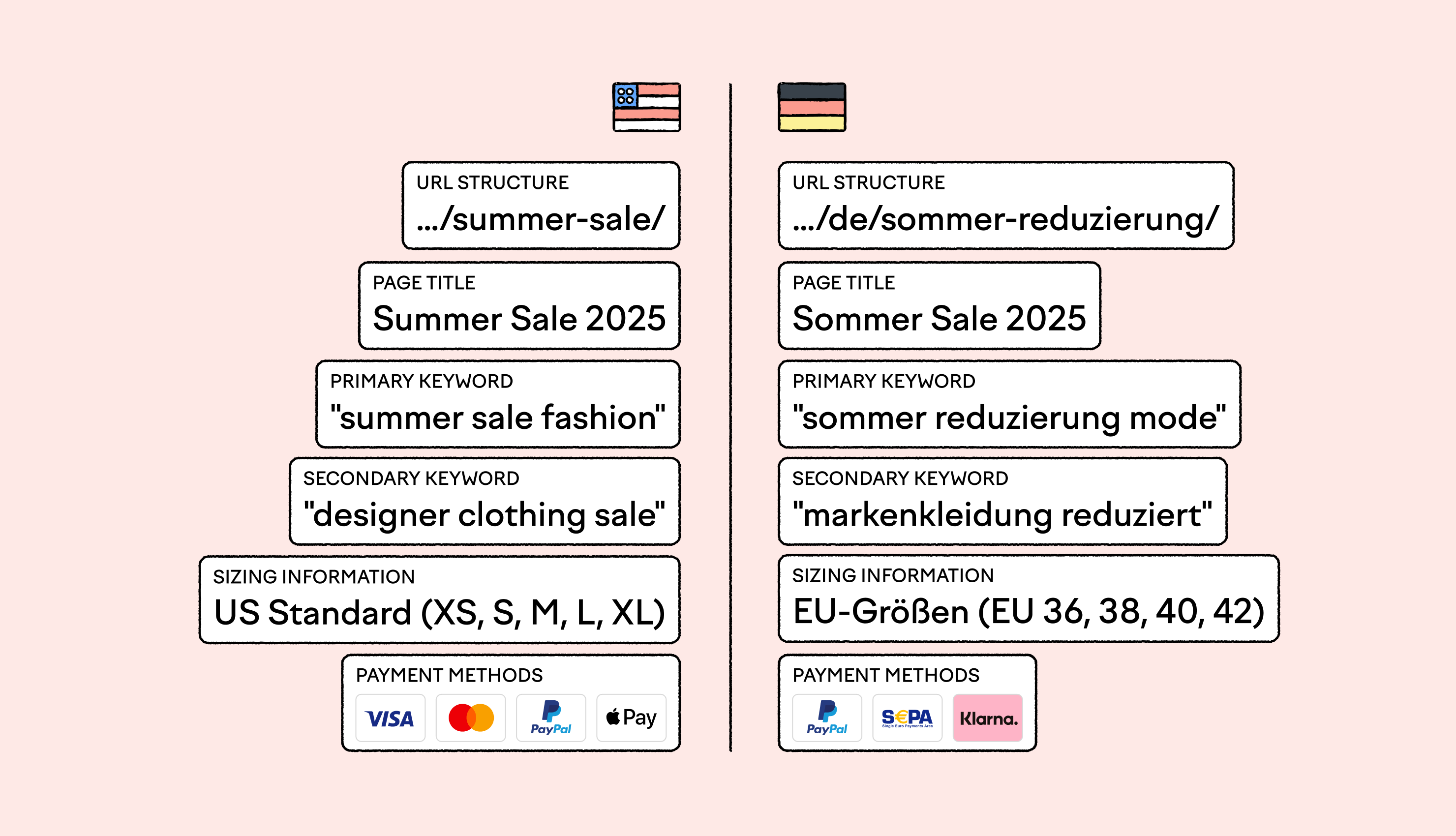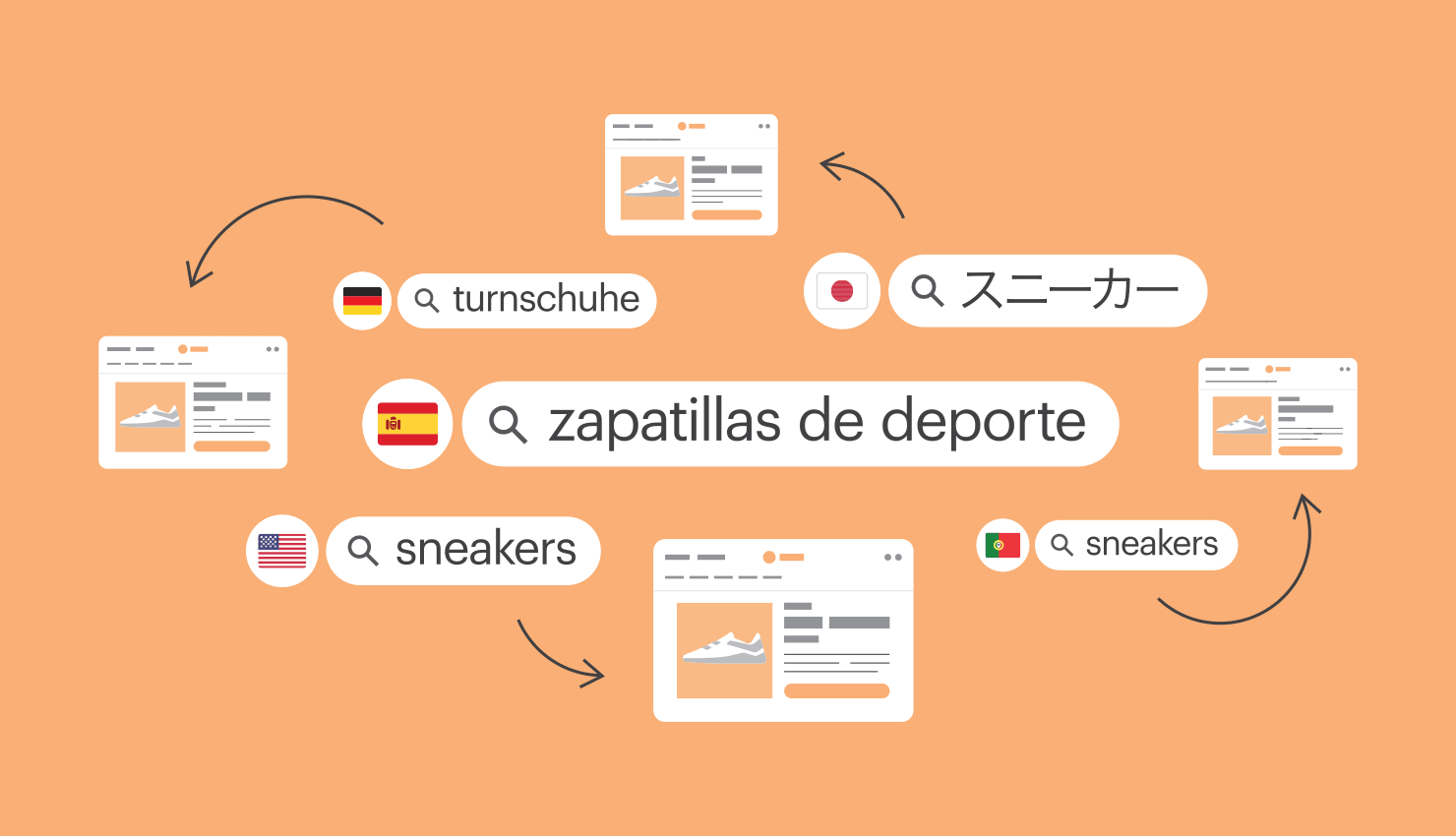Common pitfalls to avoid when localizing for SEO
Even well-intentioned SEO localization projects can go off track. Here are the mistakes that come up most often, with quick and easy tips on how to avoid them.
Relying on direct translation of keywords
Translating your English keyword list directly into another language rarely works. People search differently across markets. Make sure to always validate keywords locally with research tools and native input before you go all in with writing content.
Ignoring technical SEO signals
Without hreflang tags, localized sitemaps, or a clear URL structure, search engines won’t know which version of your site to serve. This can cause duplicate content issues and cannibalize your rankings.
Not paying attention to cultural context
Content that reads like a translation feels out of place. Tone, formality, and phrasing all need to be adapted to local expectations. Don’t skip this step. It can damage your rankings and brand trust.
Overlooking measurement
Launching localized content without defining KPIs means you won’t know if it’s working. Track visibility, engagement, and conversions from day one to prove impact and adjust where needed.
SEO localization isn’t a one-person job. It takes the right mix of technology and people to deliver content that ranks and resonates.
Here’s a list of useful tools:
- Keyword research tools (Ahrefs, SEMrush, Sistrix) help you find local keywords with real search volume and intent
- Analytics platforms (Google Analytics, Search Console, or local equivalents) help you track traffic, clicks, and visibility across markets
- Crawlers and audit tools (Screaming Frog, Sitebulb) help you catch any missing hreflang tags, duplicate content, or crawl errors
- Localization platforms (such as Lokalise) enable you to manage multilingual content, ensure consistency, and integrate SEO workflows with translation
- Rank tracking tools (AccuRanker, SERPWatcher) help you monitor keyword performance per language and region
As for the people you need… Well, successful SEO localization relies on a mix of expertise.
For sure, you’ll need SEO specialists to handle keyword research, on-page optimization, and technical setup. And having a hands-on localization manager to coordinate translation workflows is also a must.
Native linguists with SEO knowledge adapt content so it reads naturally while embedding local keywords. Developers ensure the technical side is covered by implementing hreflang, fixing site architecture, and resolving SEO issues.
Finally, content and marketing teams build localized content hubs, adapt campaigns, and make sure the brand voice carries consistently across markets.
It takes a village, indeed.





